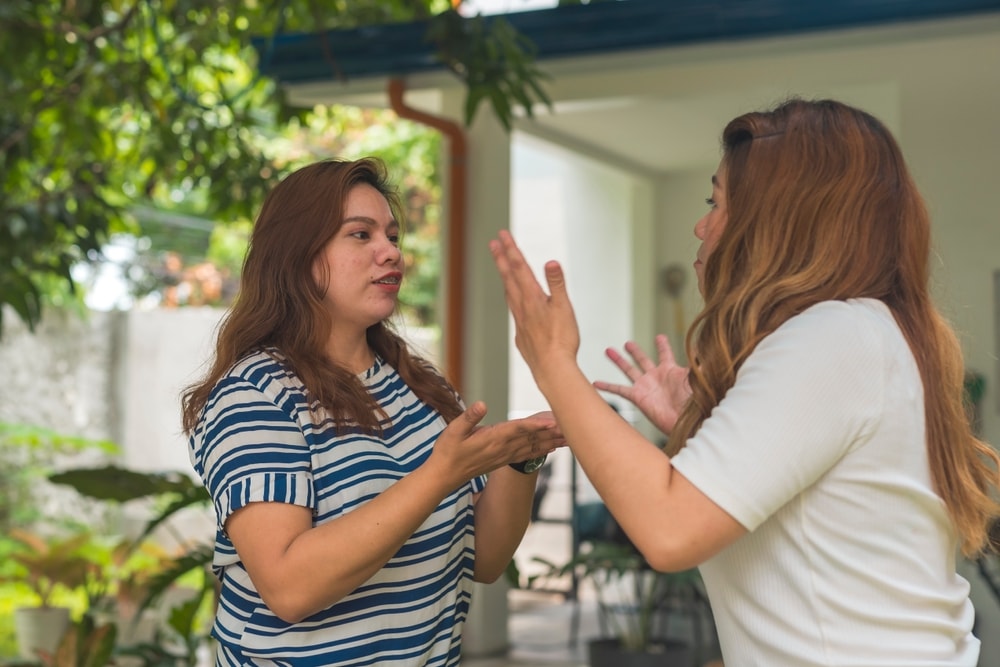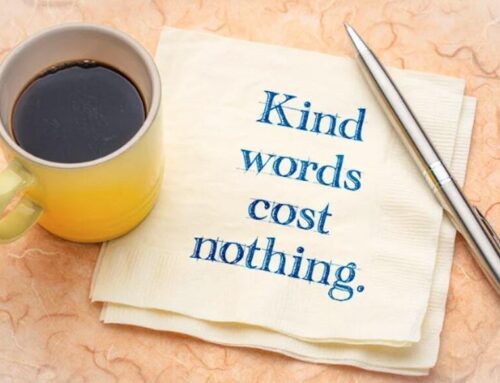
Across industries, conflict is a given. It happens in startups and hospitals, remote teams and service floors, and between colleagues who have worked together for years and people meeting for the first time.
What matters most is what a team does next. That is why conflict resolution training must be grounded in realism: real people, real tension, real stakes. The most effective programs help team members explore disagreements in a way that leads to growth, not grudges.
This article explores how conflict resolution exercises work, the different formats we offer, and how these tools help team members develop conflict resolution skills that actually translate to the workplace. Whether a team struggles to resolve conflicts constructively or simply wants to improve under pressure, this is a strong place to start.
Definition & Benefits of Conflict Resolution Exercises
When conflict resolution exercises are done well, the goal is simple: create a safe space to practice what often feels uncomfortable. These exercises do not live in theory. They simulate real conflict situations that team members may already be facing or could face soon.
Whether it is a disagreement over priorities, communication breakdown, or a power struggle between departments, structured role-play allows teams to apply and refine real conflict resolution strategies in a low-risk setting.
These are not abstract skills. They become real through experience. Below are some of the most important benefits.
Build Emotional Intelligence, Empathy, and Assertiveness
Managing conflict often starts with understanding one’s own emotional responses. Through exercises like make-believe mediations and staged workplace challenges, participants learn how to recognize frustration, respond with clarity, and extend empathy to other participants. These are essential skills that shift how a team communicates day to day.
Role-play also encourages the exploration of different conflict resolution styles. The first person may be used to avoiding conflict altogether. The second person might default to control or over-accommodation.
Trying different roles helps build self-awareness and increases flexibility during real interactions. The result is a team that can handle pressure with confidence, not panic.
Enhance Active Listening and Nonverbal Communication Skills
A core component of conflict resolution activities is actively listening. In structured active listening exercises, participants pair up and respond not from emotion but from a place of intentional listening. This includes paraphrasing, reflecting feelings, and staying attentive to tone and body language.
These skills are difficult to build without practice. However, in a low-risk environment, team members have the space to try, fail, and adjust. Over time, habits form, and those habits carry into workplace conflicts, where structured exercises, like conflict confessions and hypothetical scenarios, help normalize vulnerability, reflection, and growth.
Boost Confidence in Managing Future Conflict Scenarios
The more a team works through hypothetical scenarios, the less intimidating conflict becomes. Rather than freezing or shutting down, team members start recognizing common patterns and leaning on the tools they have practiced to resolve conflicts more effectively.
Confidence builds as people realize they can respond with calm, ask clarifying questions, or brainstorm ideas without becoming defensive. When teams are familiar with structured practice, they become better at managing future conflicts in real time and with better outcomes.
Foster Teamwork, Trust, and Mutual Respect
Handled poorly, conflict damages trust. Handled skillfully, it builds it. Through carefully designed conflict resolution activities, team members start to see each other’s intentions more clearly. They move from reacting to reflecting, and that creates a more cooperative environment.
Small shifts make a big difference. Someone who might have interrupted in the past pauses to listen. Someone who normally avoids tension speaks up. These interpersonal changes improve team dynamics and contribute to a culture of openness and accountability.
Encourage Creativity and Collaborative Problem-Solving
Every conflict scenario includes space for innovation. Teams are not handed pre-scripted solutions—they are asked to explore, adapt, and adjust.
One popular example is the “orange negotiation” scenario, where participants work out how to divide limited resources based on real underlying needs. Only by exploring multiple angles can they land on an agreeable solution.
These kinds of team-building activities improve problem-solving under pressure. The more teams practice outside-the-box thinking during structured conflict, the more likely they are to carry that flexibility into real-world situations.
Types of Conflict Resolution Exercises Offered by AllWin
No two teams experience conflict in the same way. That is why we offer multiple formats of conflict resolution activities, each designed to meet different learning styles, team dynamics, and workplace realities.
Role-Playing Scenarios
These conflict resolution activities are at the heart of our approach. In conflict resolution role plays, team members act out tense conversations pulled from real-world situations: missed deadlines, clashing priorities, unclear expectations, and more.
Participants take on roles, sometimes their own, sometimes someone else’s, and explore what happens when they shift language, tone, or timing. These conflict resolution activities encourage teams to step into each other’s shoes and test different paths toward resolution. In the process, they strengthen their capacity for effective communication and emotional regulation.
This format helps team members imagine not only what they want to say but how it will be received. That shift in perspective creates space for learning and for more intentional dialogue back on the job.
Mediation Simulations
Not every workplace conflict is peer-to-peer. Many involve managers, HR professionals, or team leads needing to guide others through disagreement. That is where mediation simulations come in.
In this structure, three individuals work together: two as the parties involved and one as the neutral mediator. The mediator’s job is to use curiosity, re-framing, and clarity to help both sides reach a shared understanding.
These conflict resolution strategies teach how to enhance empathy, neutrality, and facilitation. They also help participants learn to separate positions from interests, an essential shift in reaching a sustainable resolution.
Interactive Group Activities
Some dynamics emerge only under pressure. We use team-building exercises that simulate real conflict situations under stress. These include:
- Resource-based simulations
- Time-sensitive collaboration challenges
- Trust-building exercises that surface assumptions and habits
These conflict management games are designed to show team members how quickly habits can derail communication. Through intentional debriefs, these moments become lessons:
- How did someone’s tone affect the group?
- When did a breakdown occur?
- What was the turning point?
Team members leave with insight not only into how conflict shows up but also into how they personally contribute and how to shift that dynamic for the better.

How AllWin’s Techniques Improve Communication & Problem-Solving
We believe that conflict management training only works if it sticks. Our approach to conflict management focuses on building habits that improve communication and problem-solving long after the training ends.
Active Listening and Assertive Speaking Techniques
From the first session of the team-building activities, we teach teams how to listen actively. This means giving full attention, reflecting what was heard, and responding with care. Conflict resolution strategies like active listening transform arguments into dialogue and lead to more positive outcomes.
Assertiveness is the other half. Speaking clearly, respectfully, and without blame allows teams to challenge each other without escalating tension. These are the skills that support effective conflict resolution in every setting, from meetings to performance reviews.
Scenario-Based Learning That Fosters Self-Awareness and Empathy
Each conflict management scenario we create includes space for reflection. After each role-play, participants sit with their choices, reactions, and surprises. That reflection builds self-awareness and encourages a deeper understanding of others’ experiences.
By trying new roles and responding in unfamiliar ways, team members learn to approach conflict with curiosity rather than assumption. This shift supports company culture and drives real improvement in collaboration.
Tools for Understanding Conflict Styles
Understanding one’s default approach to conflict is crucial. Some people avoid, others compete, and many over-accommodate. That is why we introduce teams to five key conflict resolution styles and invite them to test different responses across scenarios.
This awareness opens new paths. When people realize they can choose how to respond and have the tools to do so, they become more adaptive, thoughtful, and resilient.
Real-Time Coaching and Group Feedback Sessions
Our sessions include live coaching. Facilitators watch interactions, pause moments in progress, and offer clear, practical feedback. This helps participants work through awkward or difficult moments without judgment.
We also close each session with a group discussion, inviting insight from peers and observers. This feedback loop allows the group to learn not just from their own choices but from others’ as well. Over time, this culture of reflection supports more open dialogue in real workplace conflicts.
Step-by-Step Guide: How to Use These Exercises
Structured conflict resolution training only works when teams can apply it in the real world. That is why designing and facilitating each exercise thoughtfully, with clear conflict resolution strategies in mind, makes a major difference.
Whether working with new hires or senior leadership, the steps below provide a clear process for running conflict resolution activities that leave a lasting impact.
1. Scenario Design
The foundation of every good conflict resolution exercise is realism. The closer a scenario mirrors what actually happens in the workplace, the more likely team members are to engage seriously and benefit.
Start by identifying common triggers. These might include:
- Miscommunication or lack of clarity
- Disputes over workload, roles, or deadlines
- Personality clashes or decision-making tension between two teams
From there, build out specific conflict scenarios using actual feedback or past incidents (with identifying details removed). Include enough context for participants to understand motivations and stakes, but leave room for interpretation.
Once the situation is defined, assign roles. These often include:
- Initiator: The person who brings the issue forward
- Responder: The person on the receiving end
- Mediator: A neutral third party guiding the process
- Observer: The person who provides insight after the exercise
This structure allows participants to work through the issue while other participants watch for patterns in communication, behavior, or emotional tone. That external perspective makes debriefs much more effective.
2. Set Ground Rules
Before any conflict resolution game or role-play begins, establish clear agreements. This step is crucial for creating a cooperative environment where participants learn from mistakes, not fear judgment.
Focus on three main principles:
- Respect: Everyone agrees to listen, stay curious, and avoid personal attacks.
- Confidentiality: Nothing shared during the session leaves the room.
- Intentionality: The goal is not performance but growth.
Encourage rotating roles across different exercises. This helps team members imagine multiple viewpoints and practice stepping outside their usual dynamic. It also supports a more inclusive company culture where diverse perspectives are normalized.
3. Run the Exercise
Once roles and expectations are clear, allow the scenario to unfold naturally. Participants pair off or form small groups, depending on the format. Use this phase to encourage communication through tools like paraphrasing, open-ended questions, and neutral language.
This is not about solving the issue perfectly. The goal is to practice, observe, and adjust in real time. Facilitators should pay close attention to the following:
- Body language and tone
- Whether active listening is taking place
- If team members are addressing the real issue or avoiding it
When necessary, facilitators can pause the session to ask clarifying questions, redirect the energy, or invite observers to comment on what they’re seeing. This real-time coaching supports effective conflict resolution under pressure.

4. Facilitate Debrief
The debrief is where most of the learning happens. After each round, invite the entire group to reflect. Start with the people involved in the scenario:
- What felt hard?
- What worked?
- What would you do differently next time?
Next, turn to the observers. Encourage them to share insights on communication patterns, team dynamics, and emotional reactions. Prompt them to explore how the conflict could have escalated or been prevented.
This group feedback loop creates a deeper understanding of how people show up in conflict situations and how those choices affect the team’s ability to collaborate. Use these insights to shape future training and identify any broader patterns affecting your team.
5. Repeat With Variation
Growth happens with repetition. Do not stop after one round. Run similar conflict scenarios with slight adjustments, such as different personalities, new constraints, or a different medium (like a Slack conversation instead of a face-to-face meeting).
Gradually increase complexity. Introduce time pressure, hierarchy differences, or missing information. These variations keep team members thinking, adapting, and refining their workplace conflict resolution skills.
If your team is working in hybrid or remote formats, try adapting scenarios for video calls. This adds realism and prepares people to resolve conflicts effectively in digital spaces.
Tips for Facilitators Leading Conflict Role Plays
Facilitating workplace conflict resolution activities is an art. It requires emotional sensitivity, clarity, and the ability to hold structure while letting people explore.
Here are a few guiding principles that help conflict management sessions run smoothly and achieve real impact.
Know the Material
Preparation builds confidence. Familiarize yourself with the conflict resolution process and run through exercises before introducing them to your group. This ensures you can focus on team members, not logistics.
When you are grounded in the material, you can offer as many points of support or challenge as the group needs. This preparation strengthens your conflict management skills and helps you respond confidently to unexpected dynamics or strong emotional reactions.
Watch Emotional Cues
Workplace conflicts are often layered. What seems like a simple misunderstanding might reflect years of built-up frustration or disconnection. Watch for signs of escalation, such as:
- Raised voices
- Closed-off posture
- Sarcasm
- Silence
Be ready to pause, check in, and redirect. Remind participants to sit in a space of learning, not judgment, and give them space to breathe before continuing. Creating a safe, low-risk setting is essential for sustainable growth.
Balance Structure With Freedom
Too much structure, and scenarios feel artificial. Too little, and they become chaotic. Find the middle ground.
Give participants enough freedom to explore different outcomes, but stay available to gently steer the interaction if it veers off course. The facilitator’s job is not to control the result but to protect the process.
Sometimes, the best breakthroughs happen when participants switch sides mid-exercise. This encourages empathy, flexibility, and the ability to see others’ positions with greater clarity.
Use Observers
Having observers is one of the most powerful tools in any conflict resolution training session. Observers can spot patterns that the person responding within the scenario might not even notice. Patterns can include tone shifts, missed nonverbal cues, or small breakthroughs.
Invite observers to give supportive feedback after each round. Their perspective often leads to unexpected insights and helps the group grow faster together.
Allow Debrief Time
Never skip the debrief. This is where reflection transforms performance into learning.
Use structured questions like:
- What stood out?
- What was surprising?
- How did it feel to be in that role?
These questions invite vulnerability, accountability, and better understanding across the entire group. Over time, this process builds trust, clarity, and deeper communication skills across the team.
Practice Makes Culture
Conflict happens. Pretending otherwise only delays the inevitable. But when a team learns how to handle conflict thoughtfully, it changes everything, from morale to productivity to retention.
At AllWin, we believe that growth starts with practice. Our workshops include not only conflict resolution exercises for students but also full role-plays, guided conflict resolution games, and tailored scenarios that mirror the real pressures your team faces.
We help teams build habits, not just awareness. Our sessions blend practical conflict resolution strategies with team building, leadership development, and the tools to strengthen your company culture from the inside out.
If your organization is ready to move beyond theory into action, beyond “how we wish we handled conflict” into “how we actually do,” we are here to help. Let us support your team in building the skills, systems, and shared language that make positive relationships possible, even in hard moments.
Visit our Conflict Resolution Workshops page to explore our online conflict resolution training formats, or reach out to discuss what a tailored program could look like for your team.

About the Author: Jeremy Pollack
Jeremy Pollack, Ph.D. is the founder of Defuse De-Escalation Training, a sister company of Pollack Peacebuilding Systems, the largest workplace conflict resolution training and consulting firm in North America. He actively participates in de-escalation training and consulting initiatives for a variety of industries, from Fortune 500 companies to well-known non-profits. Besides his Ph.D. in Psychology from Grand Canyon University, Jeremy holds a Master’s Degree in Negotiation, Conflict Resolution, and Peacebuilding (NCRP) from California State University, Dominguez Hills. He is also a member of several organizations focused on conflict resolution and peacebuilding, such as the Peaceful Leadership Institute, the Association for Conflict Resolution, and the Division 48 (Division of Peace Psychology) of the American Psychological Association. Jeremy also holds several certifications in the field of training and coaching: he is a Certified Organizational Development Coach (CODC™), a Certified Clinical Trauma Specialist-Individual (CCTS-I™), and an Associate Certified Coach (ACC) under the International Coaching Federation.



